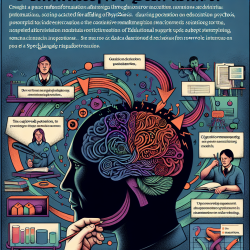Using ABA Principles to Enhance Child Therapy Outcomes
Applied Behavior Analysis (ABA) is a well-established approach in human behavior change, particularly in addressing undesired behaviors. Recent research has extended these principles to animal behavior, specifically in managing undesired behaviors in companion dogs. This innovative study provides valuable insights that can be applied to child therapy, enhancing outcomes through data-driven, evidence-based practices.
Understanding the Study
The study titled Using Principles from Applied Behaviour Analysis to Address an Undesired Behaviour: Functional Analysis and Treatment of Jumping Up in Companion Dogs explored the effectiveness of ABA techniques in reducing jumping behavior in dogs. By identifying the reinforcement contingencies maintaining the behavior, researchers successfully taught dog owners to implement a time-based reinforcement strategy, significantly reducing the undesired behavior.
Key Takeaways for Practitioners
Practitioners can apply these findings to child therapy by focusing on the following strategies:
- Functional Analysis: Conduct thorough assessments to identify the underlying causes of undesired behaviors. This approach ensures that interventions are tailored to the individual needs of each child.
- Noncontingent Reinforcement (NCR): Implement time-based reinforcement strategies to reduce undesired behaviors. This method is effective and easy to implement, making it a valuable tool for practitioners.
- Behavioral Skills Training (BST): Use a structured approach to teach caregivers and educators how to implement interventions with high fidelity. This ensures consistency and effectiveness in therapy sessions.
Encouraging Further Research
While the study offers promising results, further research is needed to explore the application of these techniques in different settings and with various behaviors. Practitioners are encouraged to engage in ongoing research and collaboration to refine these methods and expand their application in child therapy.
Conclusion
The integration of ABA principles into child therapy can significantly enhance outcomes by providing a structured, evidence-based approach to behavior change. By focusing on functional analysis, noncontingent reinforcement, and behavioral skills training, practitioners can create more effective and individualized interventions for children.
To read the original research paper, please follow this link: Using Principles from Applied Behaviour Analysis to Address an Undesired Behaviour: Functional Analysis and Treatment of Jumping Up in Companion Dogs.










